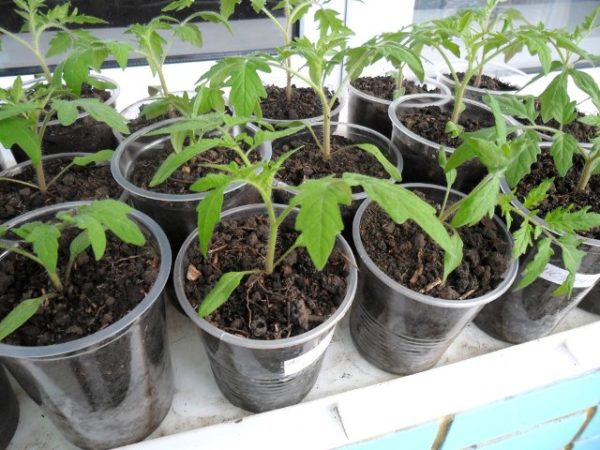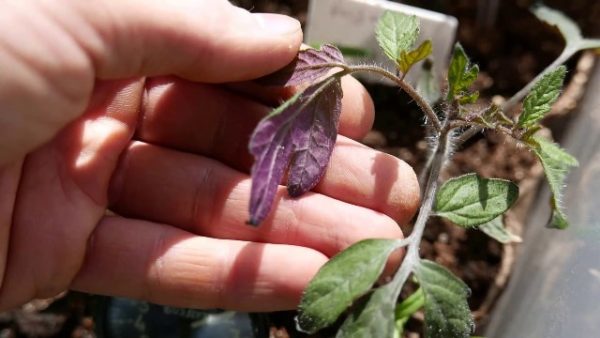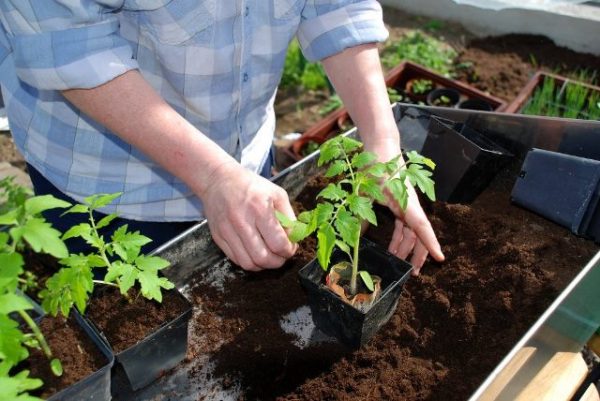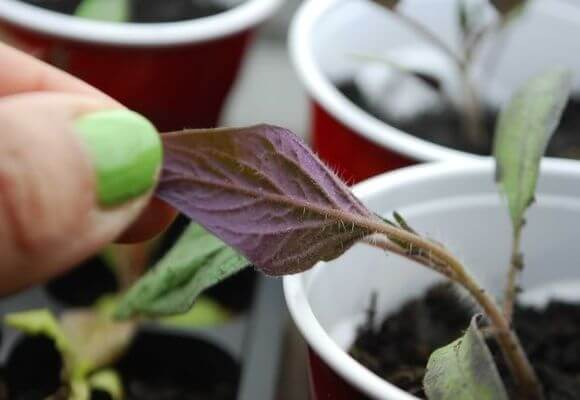Noticing that the tomato sprouts have turned purple, many inexperienced gardeners are worried and find it difficult to find the answer, what is the reason for this leaf phenomenon. Few people know how dangerous it is and whether there is a need to take appropriate action. But the color changes signal that some changes occur to the plant already at the initial phase of their growth. As it turns out, it only gets worse. Seedlings of purple shade grows poorly, begins to wither. Why this happens in tomatoes, what they lack and what to do, we will tell further.
Table of contents
Causes of purple on tomato seedlings
The main conditions include only two conditions:
- lowering the temperature of air and soil composition;
- insufficient amount of phosphorus in the nutrition of sprouts.
Any of the above reasons can occur independently, but in most cases there is always a mutual connection between them. When the temperature drops to fifteen degrees Celsius, sprouts of tomatoes begin to feel cold. Seedlings suspend their growth, the foliage on the reverse side and the stalks acquire a purple hue. Even the veins on the leaves can turn blue.

A large number of thermophilic plants belonging to the nightshade have a common feature - in cool soil, they are poorly assimilated the necessary nutrients, including phosphorus. This phenomenon may still be due to the fact that the soil is characterized by high acidity.
It is very important not to miss the beginning of the color change in order to take the necessary measures in time.
It happens that the seedlings are more colored in blue tones.. The reasons for this are not so much. The first is associated with a lack of water in hot weather. If there is such an opportunity, then on particularly warm days it is necessary to cover the beds with seedlings with plastic material until the sprouts begin to actively gain strength and grow. After watering, it is necessary to mulch the soil in order to keep moisture in it longer.
The second reason should be associated with a domestic cat, which moves to the places where it pleases. There are cases when cats simply “mark” the territory. If urine penetrates the soil with seedlings, the seedling will begin to turn blue and die. So it is necessary to isolate the landing boxes from the ubiquitous pets.
What to do if the leaves turn purple
To solve such problematic issues is recommended in the complex. First of all, the temperature rises in the room, which should be twenty-two degrees of heat. As a rule, after a week, seedlings regain their normal color and continue to develop.

If that does not happen, then the reason is the lack of phosphorus.. Phosphate-based fertilizer formulations will have to be applied. Selecting the drug, try to stay on those compounds that contain the minimum amount of nitrogen, because its concentration in the ground due to the lack of phosphorus, and so excessively large. It would be better if the fertilizer does not contain nitrogen at all.
A large amount of phosphorus is found in ammophos. It is made at the rate of fifteen to twenty-five grams per square meter of land. In the case of seedlings, the drug is diluted, as is superphosphate.
But at the same time you should not be too zealous - an overabundance of nutritional components for tomato seedlings is just as harmful as their lack.
For those gardeners who prefer a top dressing composition prepared with their own hands, experienced experts recommend using the following recipe:
- one liter of boiling water pour a glass of superphosphate;
- the mixture must be infused for ten hours, then spilled seedlings are shed with this liquid.
The amount of servings depends on the plant itself. For an adult tomato bush will require half a liter of the drug.

Prevention of changes in the color of foliage and stem in tomatoes
Based on what was the cause of the appearance of a purple hue on the above-ground part of the seedlings, in most cases preventive measures are required. In addition to making appropriate fertilizer formulations and temperature control, it is recommended that:
- proper preparation of soil composition for planting seedlings. It should be deeply dug up, make organic components and mineral compounds in the amount of seven kilograms of manure, bird droppings or compost and forty grams of superphosphate per square meter of bed;
- in the spring, all the soil in the greenhouse is dug and cultivatedtwenty-five grams of superphosphate and twenty grams of potassium-containing fertilizer are added to each square meter;
- transplanting to a permanent place tomato seedlings need feeding in two weeks, containing organic and mineral components. This role can be performed by manure and superphosphate diluted with warm water;
- without fail two basic feeding of tomato plants, the interval between which is fifteen days. For this purpose, solutions of twenty grams of superphosphate, fifteen - of potassium salt and ten - of ammonium nitrate are used. All drugs are diluted in ten liters of heated water.

In order for your tomato plants to be distinguished by good productivity and healthy appearance, you should periodically inspect the seedlings, whether they have turned blue, have not gone stained. Keep the room temperature under control. Another prerequisite is strict adherence to the rules of agrotechnology, according to which tomato culture is grown.
